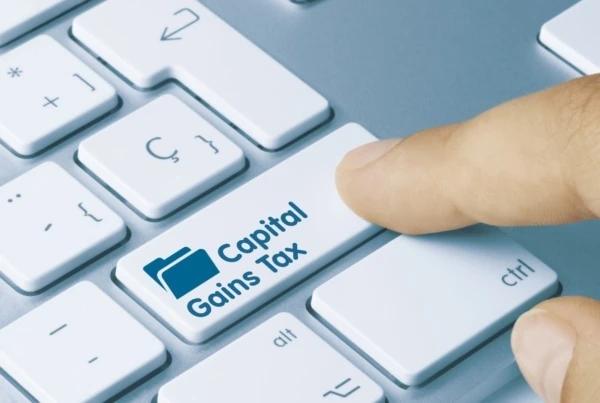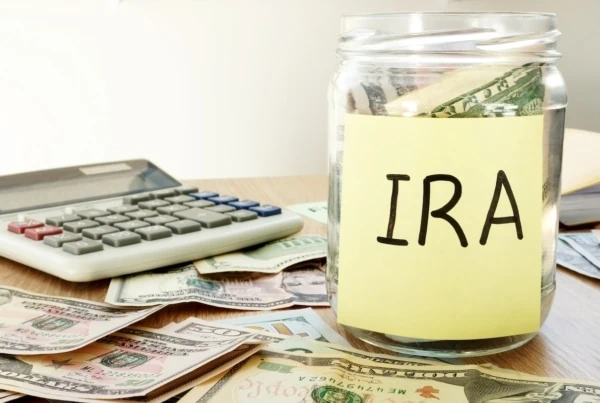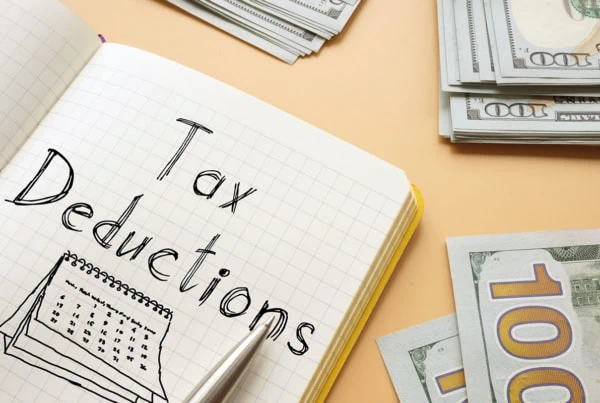The 2024 tax season is upon us, but the vast majority of Americans haven’t thought much about filing their tax return yet. And there’s a reason for that—most people hate filing taxes and want to put it off for as long as possible!
But, more than likely, you’re eventually going to have to bite the bullet and file taxes this year. And since there’s no time like the present, maybe now is a good time for you to get started.
That’s why we’re providing the following tax preparation checklist—along with additional tips and advice to help you this tax season. The sooner you finish this year’s tax return, the sooner you can get it off your mind once again.
When Is the 2025 Tax Deadline?
![Tax Preparation Checklist [Get Ready for Your 2024 Tax Return] 2 april 15 calendar tax time blocks](https://youngandtheinvested.com/wp-content/uploads/april-15-calendar-tax-time-blocks.webp)
For most people, the deadline for filing your 2024 federal income tax return is April 15, 2025. But because of the widespread damage caused by Hurricanes Helene and Debby, taxpayers across all of Alabama, Florida Georgia, North Carolina, and South Carolina, and parts of Tennessee and Virginia, will have until May 1, 2025. (Unsure if you have an extended deadline? The IRS lists disaster relief by state on IRS.gov.)
However, before you get too focused on the tax filing deadline, check to see if you even need to file a return. Depending on your age and filing status, your income might be below the filing requirement threshold, which means you might not have to file a federal tax return this year.
On the other hand, even if you’re not required to file a return, it’s sometimes worth the effort to file one anyway. For instance, you might trigger a tax refund if you can claim one or more of the following tax credits:
- Earned income tax credit
- Additional child tax credit
- American Opportunity tax credit
- Credit for federal taxes on fuels
- Premium tax credit
- Credits for sick and family leave
You might also be due a refund if you had taxes withheld from your paycheck (or other income) or made estimated tax payments in 2024. But you need to file a return to get that refund check!
Related: 30 Tax Statistics and Facts That Might Surprise You
Should You File Your Tax Return Now?
![Tax Preparation Checklist [Get Ready for Your 2024 Tax Return] 3 form pen social security benefits taxed](https://youngandtheinvested.com/wp-content/uploads/form-pen-social-security-benefits-taxed.webp)
There are good reasons to file (or at least start) your tax return now. Filing as early as possible reduces the risk of tax return fraud, and you’ll get any tax refund sooner.
If you owe taxes, you’ll have more time to get the money together (you can file now, but pay in April/May).
Plus, if you’re looking for a tax preparer, you might not be able to find one if you wait until the last minute.
Do you want to get serious about saving and planning for retirement? Sign up for Retire With Riley, Young and the Invested’s free retirement planning newsletter.
Tax Prep Checklist With Some Steps to Follow
![Tax Preparation Checklist [Get Ready for Your 2024 Tax Return] 4 stock research checklist](https://youngandtheinvested.com/wp-content/uploads/stock-research-checklist.webp)
Sherlock Holmes famously said “begin at the beginning” when informing how you should retell a series of events. And that makes sense not only for this famed detective, but for how you should prepare for your tax season as well.
Hopefully, if you’re required to file a tax return this year, having the information below will make tax season a little less stressful.
Related: What’s Your Standard Deduction This Year?
1. Gather Your Receipts and Tax Documents
![Tax Preparation Checklist [Get Ready for Your 2024 Tax Return] 5 couple budgeting tax](https://youngandtheinvested.com/wp-content/uploads/Couple-budget-tax.webp)
The first thing you’ll want to do before diving into the tax forms and instructions is collect and organize all the documents you’ll need to complete your tax return. (Hopefully, you’re not keeping them in a shoebox.)
In addition to W-2 forms from your employer reporting wages, there’s a long list of similar forms you could receive. For instance, you might have received one or more 1099 forms showing other types of income, such as interest, dividends, non-employee compensation, pension payments, Social Security benefits, distributions from retirement plans, and the like. Or, perhaps, you got a 1098 form in the mail reporting mortgage interest, student loan interest, or tuition paid in 2024. If you have an ownership interest in a small business, you should receive a Schedule K-1 showing your share of the business’s income, deductions, credits, and other items (although you may not have received this form yet). That, of course, is not an exhaustive list…there are other “information forms” you could get, too.
Just remember that the Internal Revenue Service (IRS) also receives a copy of most forms. So, don’t even think about reporting a different amount on your tax return. If there’s an error on a form you receive, ask the sender to issue a corrected form so that the IRS gets the right information. Though, if all else fails, you can properly report any incorrect information contained on a tax form provided by someone else on your own tax return. Call the IRS at 800-829-1040 for further instructions if this happens to you.
You’ll also need receipts for any deductible expenses or other costs for which you plan to claim a tax credit. Have any records of 2024 financial transactions on hand as well, including records for any cryptocurrency or other digital assets you bought or sold last year.
Further, if you own rental property, you’ll need rental income records, as well as documentation showing real estate taxes and any personal property taxes paid during the tax year. Further, you should gather information related to your rental asset (e.g., cost, date placed in service, etc.) so you can claim MACRS depreciation on your rental. If your property suffered damage and you had a successful claim against your losses, you’ll also want records regarding any insurance reimbursements that lower your business loss.
Related: What Tax Bracket Are You In?
2. Hiring a Tax Preparer: Caveat Emptor
![Tax Preparation Checklist [Get Ready for Your 2024 Tax Return] 6 tax professional](https://youngandtheinvested.com/wp-content/uploads/tax-professional.webp)
Be careful if you’re looking for someone else to prepare your tax return. Just because someone hangs up a “Tax Preparer” sign doesn’t mean they’re actually qualified to do the job. It’s best to hire a credentialed preparer, such as a CPA, enrolled agent, or even a tax attorney. The IRS has an online directory that can help you find a credentialed tax preparer near you.
To weed out dishonest or incompetent preparers, you also might want to check out the preparers’ reputation in the community (e.g., check with the Better Business Bureau). A referral from a trusted friend or family member is another option. For CPAs and tax attorneys, contact the licensing authority in your state (e.g., bar association) to see if there have been any disciplinary actions taken against the prospective tax preparer. You can verify the status of an enrolled agent on the IRS website.
Also make sure you ask about fees up front. The complexity of your return, the preparer’s experience, and various other factors drive your bill up or down. If you can’t get an exact quote, at least make sure you understand the overall pricing structure, including what’s covered and what’s not (e.g., state return, e-filing fees, audit support).
And whatever you do, don’t hire a tax preparer if his or her fee is based on a percentage of your tax refund, you’re asked to sign a blank tax return, or he or she won’t sign and include a Preparer Tax Identification Number (PTIN) on your completed return. Those are big red flags about the preparer’s honesty and credibility!
If you have problems with a tax preparer, you can file a complaint with the IRS using Form 14157 and/or Form 14157-A. You can also report problems with a CPA or tax attorney to the state licensing board.
Related: Do You Have to File Taxes This Year?
3. Doing It Yourself
![Tax Preparation Checklist [Get Ready for Your 2024 Tax Return] 7 IRS help taxes](https://youngandtheinvested.com/wp-content/uploads/IRS-help-taxes.webp)
There are a few options for DIYers who want to tackle their own tax return.
The most common route is to use tax preparation software from companies like TurboTax or H&R Block. Prices, functionality, and features for these tax prep programs vary widely, so make sure the software you select is right for your situation and budget. If you need a little help picking the right program, check out our tax software rankings.
Depending on your adjusted gross income, you might be able file your tax return for free using private software under the IRS Free File program. (The 2023 threshold was $79,000 or less; 2024’s amount is $84,000.) However, pay close attention to each company’s eligibility requirements. Depending on your situation, you might not qualify for a free tax return even if your income is below the income threshold. Eligibility rules for each program and a selection tool are available on the IRS Free File website.
If you feel comfortable enough—and that’s a big if for most people—you can use the fillable forms on the IRS website for free. This is for people who already know their way around the tax forms. Unlike the private tax software programs, no guidance is provided. So, if you’re not comfortable figuring out things on your own, this option is not for you.
Finally, in 2024, the IRS introduced its own tax software through a pilot program called IRS Direct File. The software is similar to commercial tax prep software products already on the market (e.g., it uses an interview-based, question and answer format). Unfortunately, this software is only available to taxpayers with relatively simple tax returns, but it has expanded, to 24 states from 12 initially.
Related: Capital Gains Tax: What Is It, Rates, Home Sales + More
4. Tax Refund (Ka-Ching!)
![Tax Preparation Checklist [Get Ready for Your 2024 Tax Return] 8 receive tax refund](https://youngandtheinvested.com/wp-content/uploads/Receive-tax-refund.webp)
Now we get to the good part: tax refunds! Everybody wants a big one, but it’s actually better to have a small refund (or even no refund at all). If you get a refund, all that means is you paid more tax to the government last year than you had to. In essence, you gave Uncle Sam an interest-free loan.
So, if you get a big refund this year, consider decreasing the tax withholding from your paycheck. You can do this by giving your employer a new W-4 Form and making sure all tax credits and tax deductions that you qualify for are reflected. Less withholding this year will likely result in a smaller refund next year—but it also means more money in each paycheck this year. It’s like giving yourself an instant raise!
In addition, if you’re getting a tax refund this year, make sure you e-file your return and have your refund hit your bank account via direct deposit. You’ll get your refund much faster with direct deposit (most likely within 21 days). Once you file your return, you can track the status of your refund using the IRS’s Where’s My Refund tool.
You can have your refund deposit into multiple bank accounts (up to three). You can even have part of it deposited into an individual retirement account (IRA), health savings account (HSA), Archer medical savings account, Coverdell education savings account, or TreasuryDirect account. Another option is to use part of your refund to buy up to $5,000 of Series I savings bonds. Use Form 8888 to make any of these choices.
Related: Child Tax Credit FAQs [What Every Parent Needs to Know]
5. Paying Taxes (Ugh!)
![Tax Preparation Checklist [Get Ready for Your 2024 Tax Return] 9 writing check to the irs to pay taxes](https://youngandtheinvested.com/wp-content/uploads/writing-check-to-the-irs-to-pay-taxes.webp)
If you owe tax, you can wait until April 15 (or May 1) to pay it, even if you file your return earlier. You can make payments online or by phone, or you can go old school and mail in a check or money order. You can even pay by cash in-person through one of the IRS’s retail partners (maximum of $1,000 per day per transaction).
What if you can’t pay by the April 15 (or May 1) deadline? You can apply online for a payment plan, or request an installment plan using Form 9465. If you have an “undue hardship” (i.e., you’ll have a substantial financial loss if you pay your tax when it’s due), you can ask the IRS to extend your payment deadline using Form 1127. Other, more complicated options include requesting an “Offer in Compromise” or a temporary delay of the collection process.
Related: Student Loan Interest Deduction: How Much, Eligibility + More
6. Need More Time to File?
![Tax Preparation Checklist [Get Ready for Your 2024 Tax Return] 10 medium have to file taxes](https://youngandtheinvested.com/wp-content/uploads/med-have-to-file-taxes.webp)
If for any reason you can’t file your tax return by the April 15 (or May 1) deadline, simply request an automatic six-month extension by filing Form 4868 or making an electronic tax payment to the IRS. That will push your filing deadline to Oct. 15.
But remember that an extension is only for filing your tax return—not for paying any tax due. So, if you expect to owe taxes this year, estimate the tax you’ll owe and pay that amount by the April 15 (or May 1) deadline.
Related: How to File a Tax Extension
7. Other April 15 Deadlines: Don’t Forget Your Estimated Tax Payments
![Tax Preparation Checklist [Get Ready for Your 2024 Tax Return] 11 penalty failure overdue tax](https://youngandtheinvested.com/wp-content/uploads/penalty-failure-overdue-tax.webp)
There’s more to April 15 than just the tax return filing deadline. If you’re self-employed or have other income not subject to tax withholding, the first estimated tax payment for the 2025 tax year is also due that day (or May 1 for people in areas affected by Hurricane Helene).
April 15 is also the last day to contribute to an IRA or health savings account for the 2024 tax year. If you put too much money in an IRA for 2024, it’s the last day to avoid a penalty by withdrawing the excess funds (unless you requested an extension).
Related: 2025 Tax Calendar (Tax Deadlines for the Entire Year)
8. State and Local Tax Returns
![Tax Preparation Checklist [Get Ready for Your 2024 Tax Return] 12 map of states on money](https://youngandtheinvested.com/wp-content/uploads/map-of-states-on-money.webp)
Unless you live in a state with no broad-based income taxes—Alaska, Florida, Nevada, New Hampshire, South Dakota, Tennessee, Texas, Washington, or Wyoming—you might have to file a state tax return, too. In most cases, your state return will be due on April 15 (or May 1), just like your federal return.
However, a handful of states have a later due date, including Delaware (April 30), Hawaii (April 20), Iowa (April 30), Louisiana (May 15), New Mexico (April 30 if e-filed), Oklahoma (April 20 if e-filed), and Virginia (May 1).
Some cities, counties, or municipalities might also require local taxes, so be sure you keep abreast of those rules as well.
Do you want to get serious about saving and planning for retirement? Sign up for Retire With Riley, Young and the Invested’s free retirement planning newsletter.
Related: States That Tax Social Security Benefits
Smart Things to Do With a Refund
![Tax Preparation Checklist [Get Ready for Your 2024 Tax Return] 13 investment vehicles](https://youngandtheinvested.com/wp-content/uploads/pulling-investment-vehicles-up-an-arrow.webp)
Back to refunds—and what to do with them. If you get a big tax refund, there are all sorts of ways to spend it quickly. You can blow it on a vacation, new TV, jewelry, maybe even a new car. That will give you plenty of short-term satisfaction … but we have some better ideas.
Why not save and invest your tax refund? That way, you’ll have more to spend on more important things later.
If you’re willing to go that route, here are a few smart things to do with your tax refund:
- Invest it in a mutual fund, ETF, or other asset in an investment account.
- Save for education with a 529 Plan.
- Save for retirement with an IRA.
- Save for medical expenses with an HSA.
- Pay-down high-interest credit card debt.
- Start (or add to) an emergency fund.
Related:




![Tax Preparation Checklist [Get Ready for Your 2024 Tax Return] 1 tax preparation checklist vector](https://youngandtheinvested.com/wp-content/uploads/tax-preparation-checklist-vector-584x389.webp)



